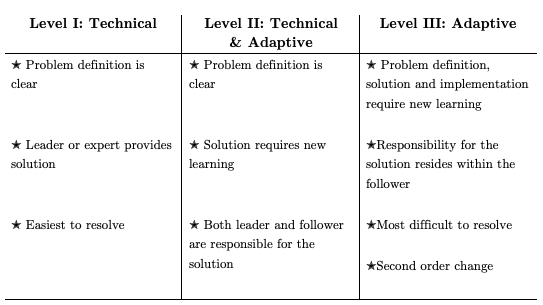
Share This Post
In this blog I will share one of my favorite tools for change and why it’s crucial to divide between adaptive and technical challenges, when we want the change.
Do you also wonder how people can get the same feedback over and over again – and even though they are motivated to make the change – they fail? There are reasons to that: Setting the goal is not enough. They are treating it as a technical challenge, though it is an adaptive challenge. Also, unconsciously, they have a foot on the break.
Going through life is like driving a car

Imagine you are driving, with one foot on the speeder and another on the break. That is how most people go through life, especially when it comes to those issues that keep returning. We first have a drive for making the change and move quickly forward. But then for some reason (you can watch why in the video below) we stand on the break – then we have to start all over again and that can seem confusing and like the problem is everlasting. Really demotivating right? What I want you to take with you from reading this paragraph is, that we people are not consistent and logic. And what we perceive as e.g. logic are very different.
We all have different webs for what we perceive as logic
People are not as simple as we’d like to think. Our mental models are complex. As an executive coach, I have the privilege to look into the minds of many leaders. What I’ve found is that we each possess a different web for what we perceive as logic.
Imagine your mind as a computer’s operating system. In the context of coaching, we often just make new “internal” apps. This, for example, can help us to optimise a certain aspect of our lives. But when we need to address issues and habits, that keep reappearing we have to change the mental model itself. This is just like if we were to change the operating system of a computer.
In this video, you will find one of my favourite tools for making real change happen.
Would you like the newest knowledge and inspiration sent directly to you?
Then subscribe to our monthly newsletter
In the video, I mentioned the difference between adaptive and technical challenges. It’s really important to understand how that differentiate to make that change happen.
Most of today’s challenges are a combination of technical and adaptive challenges. Merely taking a technical approach to a problem won’t always solve your problems. As you may have already learned, the same feedback and issues will just continue to return if you don’t also engage an adaptive approach.
Ron Heifetz and Marty Linsky, researchers at Harvard University, formed the basis for Adaptive Leadership. Heifetz and Linsky identified two types of challenges in change: adaptive and technical challenges. Technical is defined as that which can be solved by the knowledge of experts, whereas adaptive requires new learning. When the problem, definition, solution, and implementation are clear, Heifetz calls this technical change. For adaptive change, change must come from the collective intelligence of the employees at all levels, where they learn their way toward solutions together.

What is considered “challenging” varies from individual to individual. For some, health is a challenge, such as maintaining a regular gym habit or not eating too much candy. For others, it might be the same old feedback that keeps appearing in performance reviews, as I mentioned earlier. Each time, you make the same promise that ‘now is the time to change’. After some effort, however, you realise that things didn’t substantially change. Before you know it, you are back to the same behaviour as the year before – taking the car reference.
If you can relate to this, you might recognise this issue can seem like it is just the way things are and this can easily affect how you see the world. I once worked for a powerful, bad-tempered person. He would yell at people and often throw objects. He claimed that this was just the way he was.
Although he had an outstanding IQ, he wasn’t aware of the ability he had to change his behaviour, even after the age of 50. Maybe he lacked motivation, or maybe he truly believed his own limited experience of the world. The good news is there are tools, techniques, and frameworks to support change! Even the most gifted people have mental models that limit their outlook. This is part of the human engineering.
For adaptive challenges I use the Immunity to Change Model by Kegan & Lehay
To make these changes last for adaptive challenges it’s important to use a helping tool. For me and my clients the above mentioned tool works really well. It gives new insights and provides a model easy to use. So if you jumped over seeing the video above, I would recommend taking your time – it’s worth it.
Good luck with that change of yours.
Maybe you should consider coaching – helping to deal with the real challenges. Reach out or take a closer look at the coaching page.
And remember that we help people in multinational companies to handle challenges in a meaningful way and take business to the next level. If you would like to be updated with new articles and videos, sign up for our mailing list. Your mail is not shared with anyone and there are advantages to being on the list e.g., getting a mini course in your personal leadership.












